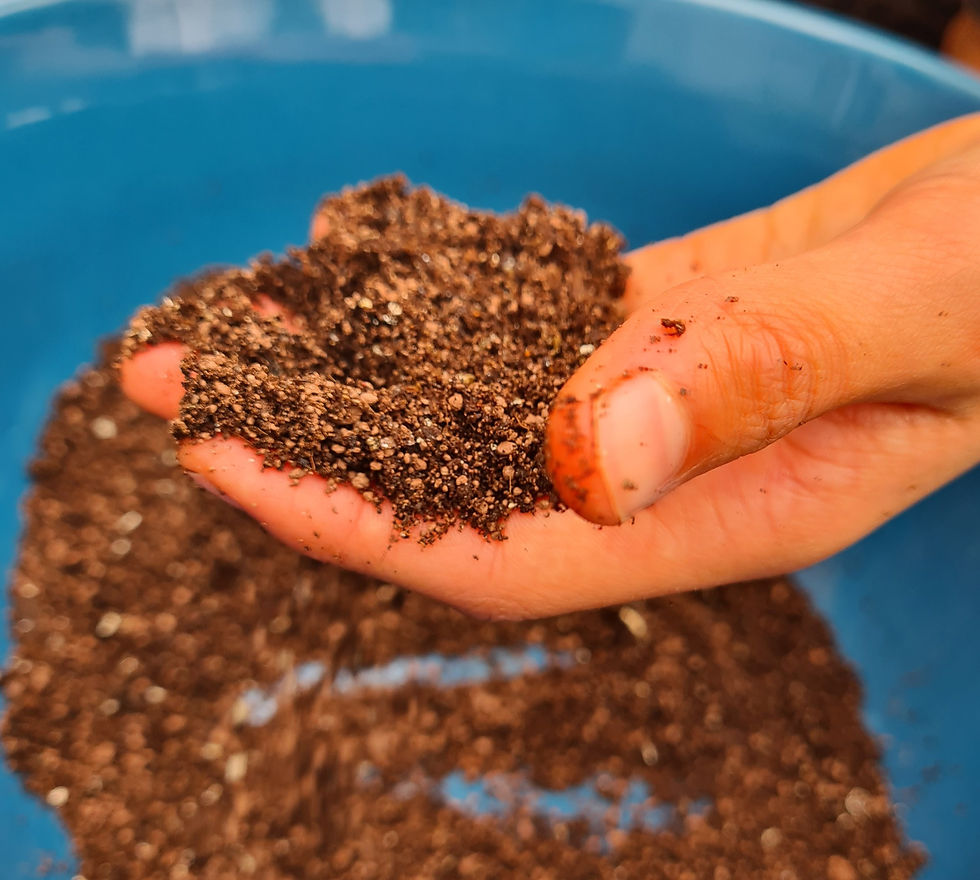How to get the most out of your Veggie Seed Bombs
- alicekeverne
- May 17, 2022
- 4 min read
Updated: May 18, 2022
Our Veggie Bombs have been tried and tested throughout the year. The great thing about seed bombs is that the clay will generally protect the seeds until they are ready to germinate. This means you can plant them at any point of the year and they will lay dormant until they are ready. We have left our Veggie Bombs out all through winter and most have survived into spring. However if the environment or elements are too harsh, the seeds may not all make it. Our guide below illustrates how to get optimum results from your Veggie Bombs.

Your Rudi Radish Veggie Bombs
When to plant
The great thing about radishes is that they can be planted throughout the growing season from February through to September. Germination only takes a few days and they grow fast so your little ones won’t have to wait long to see the results.
Sow & Grow
Your radish bombs can be placed in containers or directly into the ground. Choose a sheltered spot in full sunshine with free draining soil. Place on top of some soil, gently pushing the seed bomb so that the bottom half is in the soil and the top half is above the surface.
When the seedlings start to appear and have a pair of small leaves, gently pull some of the seedlings out to allow the other seedlings space to grow. The pulled out seedlings can be re-planted 2.5cm apart, making sure their roots and stem are re-planted deep enough for the soil to support them.
TIP: By watering the radish bombs beforehand, it will make it easier to pull the seedlings out intact, avoiding damage to their roots.

Care
Water if dry, making sure the soil is kept moist.
Harvesting your Radishes
Your radishes can be harvested between 4 – 6 weeks (between April – October). Pull out the largest as they reach the size of a marble, when they are at their tenderest. Take care not to disturb the roots of the other radishes still growing. Radishes can be eaten raw, simply cut off the roots and leaves then wash!
TIP: Save a few radish bombs, leaving them to dry naturally in a cool dark space. Then plant them a month or so after your first batch so that you have a continuous crop.
Your Boltardy Beetroot Veggie Bombs
When to plant
The best time to plant your beetroot bombs is between April – July.
Sow & Grow
Your beetroot bombs can be planted in containers (1 beetroot bomb per 45cm pot) or directly into the ground. They will need full sun or partial shade with well-drained soil. Place on top of some soil, gently pushing the seed bomb so that the bottom half is in the soil and the top half is above the surface.

Beetroot seeds produce multiple seedlings so it is best to thin them out. This allows plenty of room to grow so that they are not competing with the other seedlings for water, nutrients and light. It also helps improve the air circulation around them.
When your seedlings reach around 2.5cm high, gently pull the smaller seedlings out (these can be replanted in rows 10cm apart, providing you are careful not to damage the roots). It is best to leave one plant to mature at each spot with a distance of 7-10cm between others.
TIP: By watering the beetroot bombs beforehand, it will make it easier to pull the seedlings out intact, avoiding damage to their roots.
Care
Keep weed free. Water in dry spells every 10-14 days.
Harvesting your Beetroots
Your beetroots can be harvested between July – November.
Harvest your beets when they are no larger than a cricket ball. You can harvest them by hand by firmly grasping the area where the leaves meet the beetroot and give a firm and steady pull until it comes out of the ground.
TIP: You can also harvest your beetroots to keep in storage. To do this, harvest in autumn before the frost starts. Twist off the leaves and store in a frost free place covered in sand until ready to eat.
Your Dwarf French Bean Veggie Bombs
Dwarf French Beans are great for kids to grow themselves as they are easy to pick, early maturing, and have a high yield. They do not require much room except upwards, so they are perfect to grow in smaller spaces.
When to plant
The best time to plant your bean bombs outside is at the beginning of May/June into warm soil.
Sow & Grow
Your bean bombs can be placed in containers (1 bomb per 30-45cm wide container) or directly into the ground. Choose a sheltered spot in full sunshine with free draining soil. Place on top of some soil, gently pushing the seed bomb so that the bottom half is in the soil and the top half is above the surface.
When sowing outdoors, make sure it is after a frost (around late May/June) into a warm sunny spot. Water the bombs when first planted.

Care
Water regularly, especially when the flowers and pods start to form. Keep pods off the soil by inserting short twiggy sticks. Keep weed free.
Harvesting your Beans
You can harvest your beans in July, August and September. Start to pick your beans when the pods are around 10cm long, before the beans can be seen through the pods. They should snap off easily. Pick regularly so that the plants crop for several weeks.
TIP: Green beans are also suitable for indoor cultivation, as long as they are in a warm sunny place they can be grown throughout the year.


